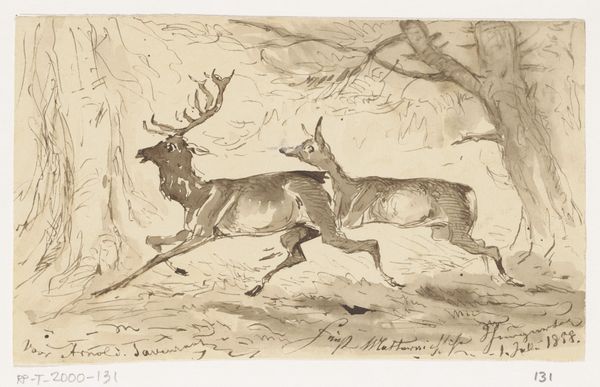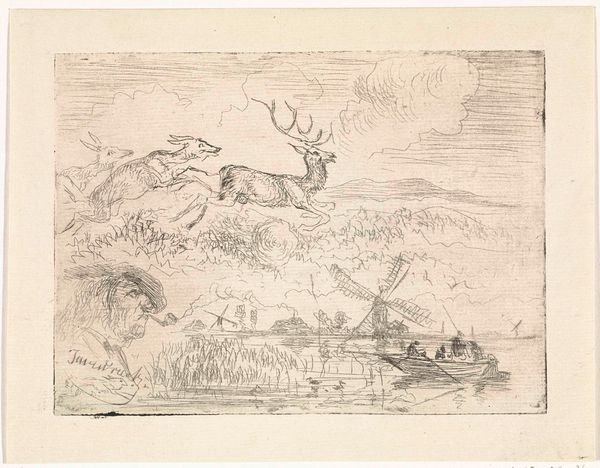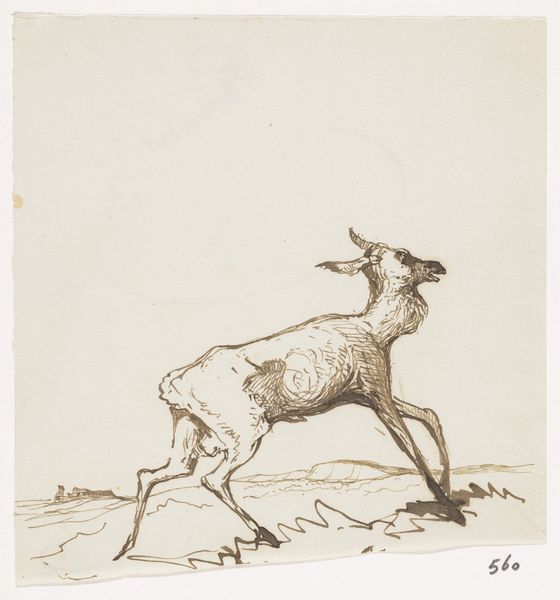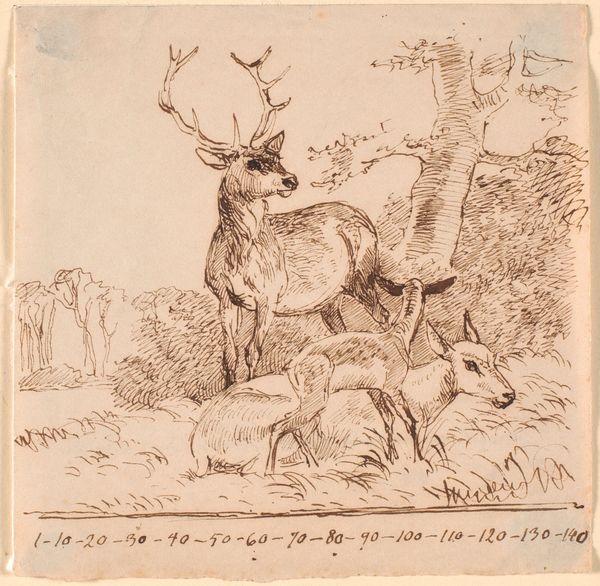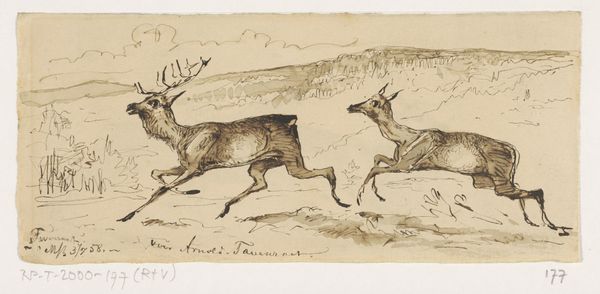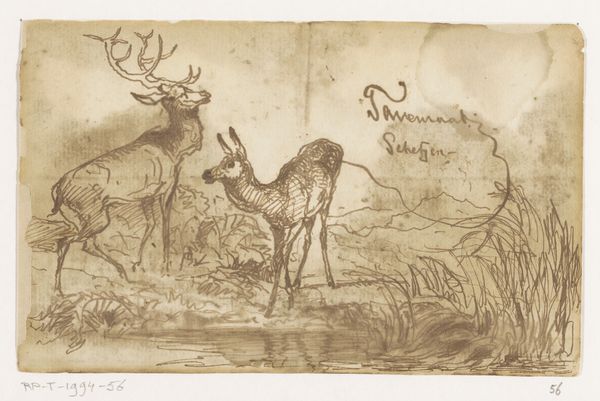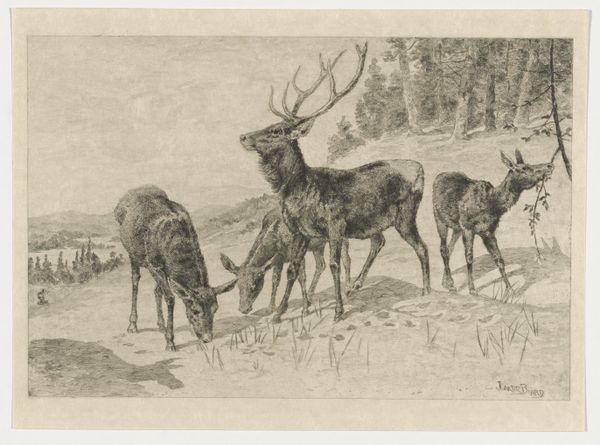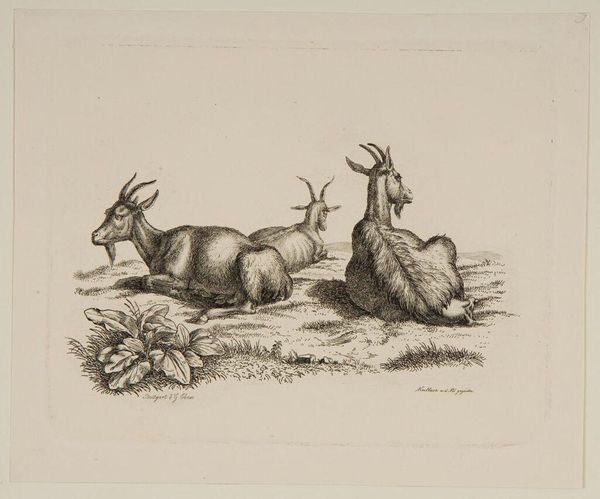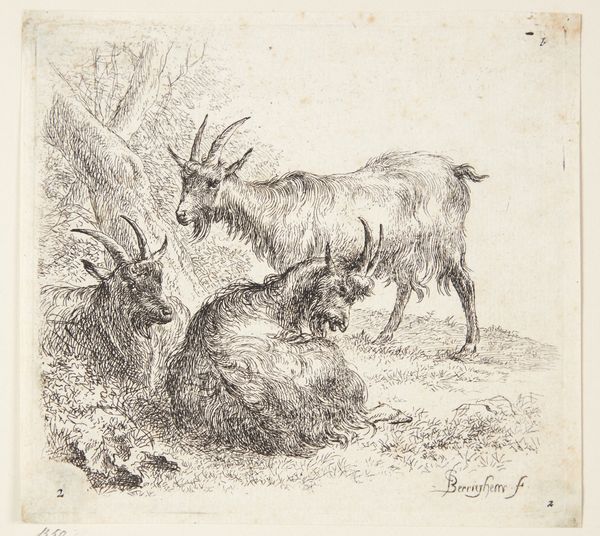
drawing, ink
#
drawing
#
ink drawing
#
animal
#
pen sketch
#
pencil sketch
#
landscape
#
ink
#
line
#
realism
Dimensions: height 80 mm, width 97 mm
Copyright: Rijks Museum: Open Domain
Editor: So, this is "Two Running Deer" by Johannes Tavenraat, created in 1863. It's an ink drawing, and I’m struck by how much movement he captures with just a few lines. What do you see in this piece? Curator: It's tempting to view this as simply a landscape, but let’s think about the broader context of 19th-century Romanticism. Animals often symbolized freedom, the untamed wilderness. These aren't just deer running; they might represent resistance against encroaching industrialization and societal constraints. What do you make of the artist choosing deer as opposed to other animals such as dogs or horses? Editor: That's interesting. I guess dogs and horses are more associated with domestication, and therefore control. Deer, especially in a landscape like this, feel much more wild and free. Do you think it's a deliberate commentary on the human control? Curator: It’s subtle, but possible. Think about whose land this *really* is, historically. The image reflects how land use and access disproportionately impacts marginalized groups. Consider who has historically had access to these landscapes versus who has been excluded or displaced. The deer, running, become a poignant reminder of dispossession and denied rights. How does this knowledge change your initial reading? Editor: Wow, I hadn't thought of that. I was just focused on the aesthetic appeal, but now seeing it as a symbol of both freedom and lost rights makes it so much more powerful. Curator: Exactly! By examining art through intersectional lenses, we reveal untold narratives. This piece stops being just a landscape sketch, and starts telling stories about people, places, power and inequality. Editor: That really broadens my understanding and it helps me appreciate how artworks carry multiple meanings, layered through history and social contexts. Curator: Agreed! I now look forward to investigating the cultural background for this work.
Comments
No comments
Be the first to comment and join the conversation on the ultimate creative platform.
